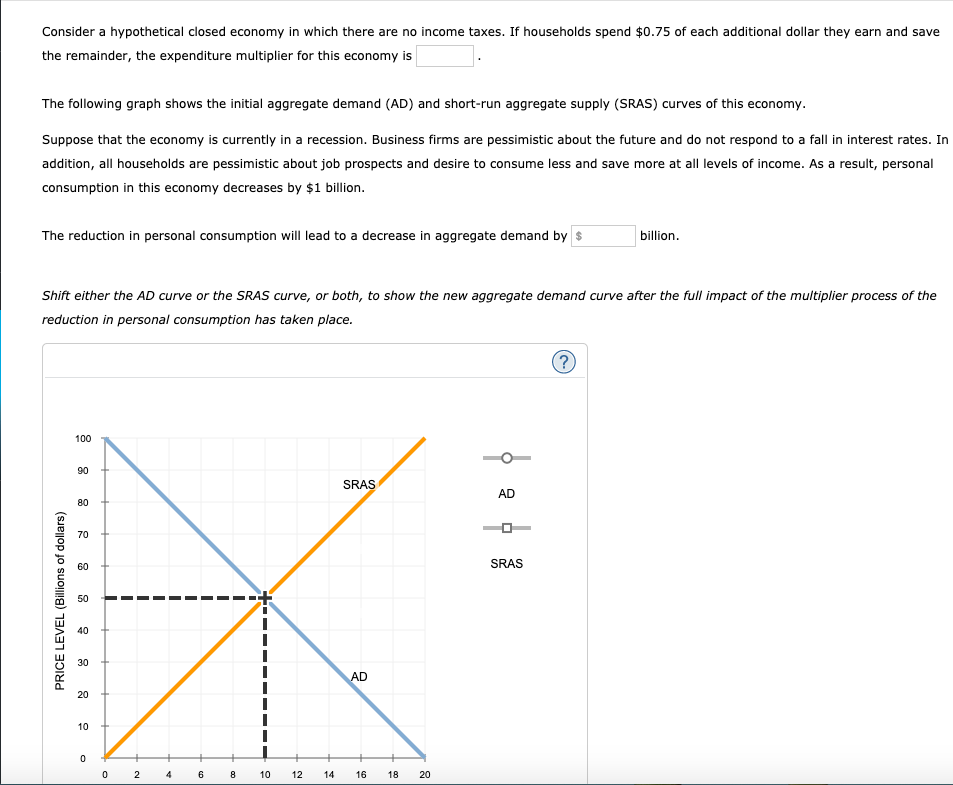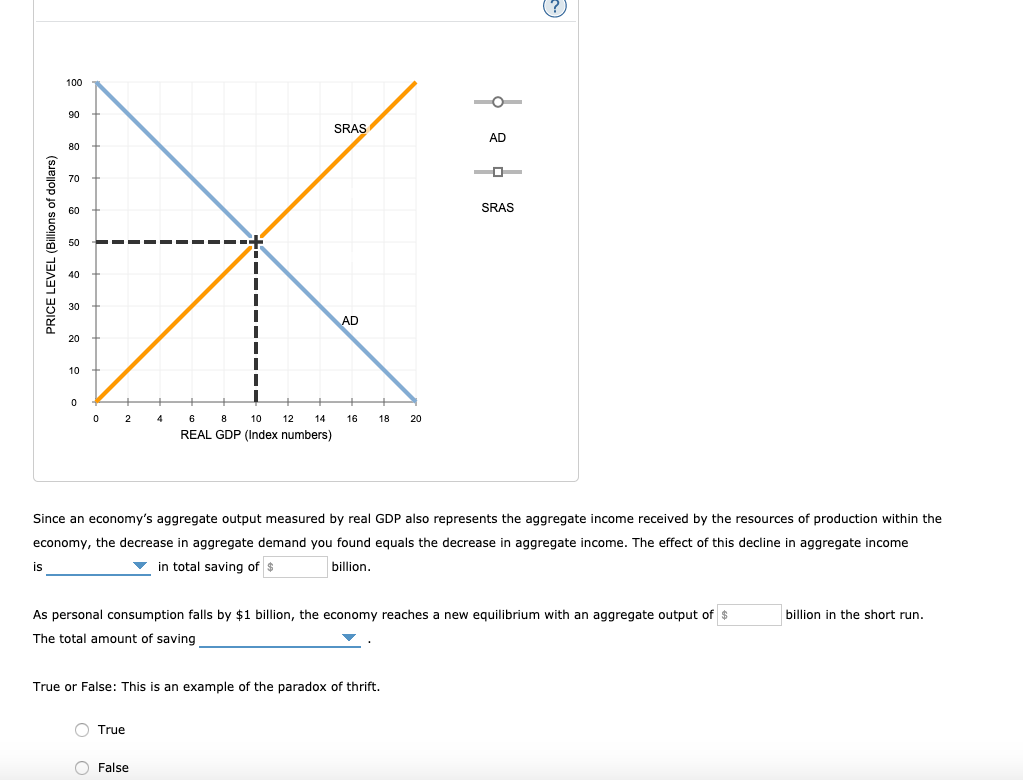Consider a hypothetical closed economy in which there are no income taxes. If households spend $0.75 of each additional dollar they earn and save the remainder, the expenditure multiplier for this economy is
Consider a hypothetical closed economy in which there are no income taxes. If households spend $0.75 of each additional dollar they earn and save the remainder, the expenditure multiplier for this economy is
Chapter9: The Keynesian Model In Action
Section9.4: Recessionary And Inflationary Gaps
Problem 1YTE
Related questions
Question

Transcribed Image Text:Consider a hypothetical closed economy in which there are no income taxes. If households spend $0.75 of each additional dollar they earn and save
the remainder, the expenditure multiplier for this economy is
The following graph shows the initial aggregate demand (AD) and short-run aggregate supply (SRAS) curves of this economy.
Suppose that the economy is currently in a recession. Business firms are pessimistic about the future and do not respond to a fall in interest rates. In
addition, all households are pessimistic about job prospects and desire to consume less and save more at all levels of income. As a result, personal
consumption in this economy decreases by $1 billion.
The reduction in personal consumption will lead to a decrease in aggregate demand by $
billion.
Shift either the AD curve or the SRAS curve, or both, to show the new aggregate demand curve after the full impact of the multiplier process of the
reduction in personal consumption has taken place.
(?
100
90
SRAS
AD
80
70
60
SRAS
50
40
30
AD
20
10
0 2
4
6
8
10
12
14
16
18
20
PRICE LEVEL (Billions of dollars)

Transcribed Image Text:100
90
SRAS
AD
80
70
60
SRAS
50
AD
20
10
2
6
8
10
12
14
16
18
20
REAL GDP (Index numbers)
Since an economy's aggregate output measured by real GDP also represents the aggregate income received by the resources of production within the
economy, the decrease in aggregate demand you found equals the decrease in aggregate income. The effect of this decline in aggregate income
is
v in total saving of $
billion.
As personal consumption falls by $1 billion, the economy reaches a new equilibrium with an aggregate output of $
billion in the short run.
The total amount of saving
True or False: This is an example of the paradox of thrift.
O True
False
PRICE LEVEL (Billions of dollars)
Expert Solution
This question has been solved!
Explore an expertly crafted, step-by-step solution for a thorough understanding of key concepts.
This is a popular solution!
Trending now
This is a popular solution!
Step by step
Solved in 2 steps

Knowledge Booster
Learn more about
Need a deep-dive on the concept behind this application? Look no further. Learn more about this topic, economics and related others by exploring similar questions and additional content below.Recommended textbooks for you



Brief Principles of Macroeconomics (MindTap Cours…
Economics
ISBN:
9781337091985
Author:
N. Gregory Mankiw
Publisher:
Cengage Learning



Brief Principles of Macroeconomics (MindTap Cours…
Economics
ISBN:
9781337091985
Author:
N. Gregory Mankiw
Publisher:
Cengage Learning

Essentials of Economics (MindTap Course List)
Economics
ISBN:
9781337091992
Author:
N. Gregory Mankiw
Publisher:
Cengage Learning

